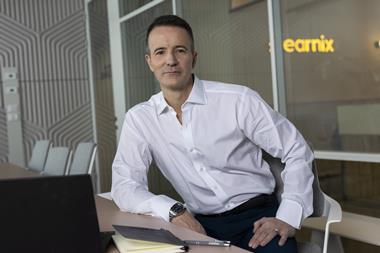The firm’s group chief financial officer explained that increased claims severity seen in H1 could continue due to the national uncertainty surrounding the coronavirus pandemic
Claims inflation connected to the ongoing Covid-19 pandemic could filter into insurers’ 2020 H2 results due to the continued economic uncertainty and overall impact on insurance supply chains, predicted John Worth, group chief financial officer at motor insurer Hastings.
In its H1 financial results published this morning, for the year up to 30 June, Hastings noted the continued escalation of claims severity linked to the pandemic – Worth thinks this increased claims inflation will continue into 2020’s H2, which is why the insurer has amended its reserving position accordingly.
Worth explained: “On the severity side, we talked about claims inflation throughout 2019. We saw that heightened level of claims inflation as we entered into 2020 and the first quarter.
“We’d say that there’s a risk of further claims inflation as we go into the second half of this year due to Covid-19; clearly there’s a lot of uncertainty in that respect, which is reflected in the reserving position that we’ve taken at the 30 June.
“That risk is really associated with disrupted supply chains and garages that have either closed and remained closed or are re-opening but are seeing a backlog of work that they need to get through, and therefore prices are going up to moderate demand.
”Cars are off the road being repaired for longer because garages are busier and replacement hire cars are needed for longer. We do expect that heightened level of claims inflation to continue during the second half.”
As well as the impact of coronavirus on motor supply chains, Worth added that how policyholders use their cars moving forward could also influence claims costs in H2.
“As we stand here now, there is a great deal of uncertainty in terms of what claims costs will do in the second half of this year and how people will use their cars going forward. For example, on the social, domestic and pleasure side, you would expect over the summer as we go into the autumn that people will tend to use their vehicles as much as they have done,” he said.
“On the commuting side, you might well see, on the one hand, people working from home more, but those that need to go into work probably choosing to do it in a car rather than on a train or some other type of public transport. So, that would clearly affect frequency.”
Speaking on claims frequency, Worth added that although the number of motor accidents has dipped while people were using their cars less during lockdown, this has now “dissipated and we’re starting to see frequency levels returning to more normal levels compared with the same period as last year”.
Worth is also looking beyond H2. He continued: “As you look into 2021 now, we’ve still got the whiplash reforms and we’ve still got the FCA’s market pricing study, which are now both slated for the second quarter of next year. So, it is a period of some uncertainty going forward I would say.”
Top note financials
Hastings has recorded some positive financial results for H1, including hitting its loss ratio target. Its guided range is between 75% and 79%, and despite falling outside of this bracket for 2019 (81.1%), this year saw the insurer achieve a loss ratio of 75.6% “due to a reduction of claims frequencies resulting from the government lockdown”.
Worth added that he is “very happy that we’re pricing appropriately. The pricing actions that we take are all with a view to remaining within that 75% to 79% range, so [I] feel comfortable with the pricing actions we’re taking”.
However, for Worth, the most significant of Hastings’s H1 statistics is around the top line growth, as the insurer has seen an increase of 5% in its live customer policies over the last year. This stands at 2.96m as at 30 June 2020 compared to 2.81m at the same time last year.
“In the current environment, including the challenges with Covid-19, we feel that that is a good result and that takes us to just shy of 3m policies now and continued the trajectory of growth that we have seen over a large number of years,” Worth continued.
This growth aligns with the investments Hastings has made “in terms of claims initiatives and in digital, so getting our customers to talk to us via our mobile app for example rather than having to call a customer call centre”, Worth said.
“It’s those sorts of investments that appeal to our customer, which then helps drive the growth and the increase in policy count.”
Worth added that Hastings has increased its investment spend in recent years – by the end of the year, Worth expects this amount to reach nearly £30m compared to £20m a year ago.
“Those investments that we’re making in the business and our strategic initiatives, we’ve just continued aside from the pandemic. It’s very much business as usual on that front,” he said.
Hastings results further stated that the group’s net debt was “stable” at £239m. Worth said this is broken down into two elements: an outstanding seven-year bond valued at £250m, which will be in place for a further four years, and cash in hand – typically between £10m and £20m, this offsets the bond, Worth explained.
“I would anticipate that going forward, we have net debt remaining at about £240m,” Worth continued. “We’ve got a revolving credit facility as well, which is a guaranteed loan should we need it from a consortium of banks – that’s £110m. We haven’t drawn down on that and I wouldn’t see any need to draw down on that because we’re still very cash generative.”
Claims revamp
A further area of investment for Hastings has been its claims function. Its financial report said: “Hastings’ claims transformation initiatives continue to develop and progress, with initiatives spanning accidental damage, third party property damage and bodily injury, including taking an analytical approach to bodily injury strategies such as intervention and pre-medical settlement.
“The group’s focus on improving customer service has helped to increase the group’s claims customer net promoter score by 16 points year-on-year.”
Worth explained that a lot of this work has been around securing new, more extensive suppler partnerships. He said: “We’ve got new suppliers.
So we spent a lot of time during 2019 looking at service and the proposition that we have from our then existing suppliers and switched to a new network of repair garages, which was much more extensive than the one that we had previously. We’ve now got access to over 700 garages and we’ve got a new arrangement with Enterprise Rent a Car as well. Those have worked out well for us.”
As for that net promoter score increase, Worth believes this is down to “the claims service, it’s the new claims partners that we’re working with. Because of the reduced frequency of claims and less claims coming in, it’s enabled us to deal with outstanding claims promptly”.
Linked to the firm’s focus on customer service and its investment in digital is the work Hastings has done around its communications, in particular its mobile app. Worth said in Q2, 880,000 customers downloaded Hastings’s app. This has certainly helped to mitigate the potential communications challenges that could arise when moving staff to a home working model due to the pandemic.
“Some of our customers have found at times it’s difficult to get through to us, particularly during that period as we were getting all of our workforce to work reliably from home, we did that over a two or three week period. And to have that alternative of the mobile app, for people to contact us digitally has worked really well,” Worth said.
“[We] particularly wanted to make ourselves accessible to customers, either with claims or renewing customers. So, existing customers we have prioritised over new business and make sure that our existing customers are properly served, that felt like the right thing to do.”














































No comments yet